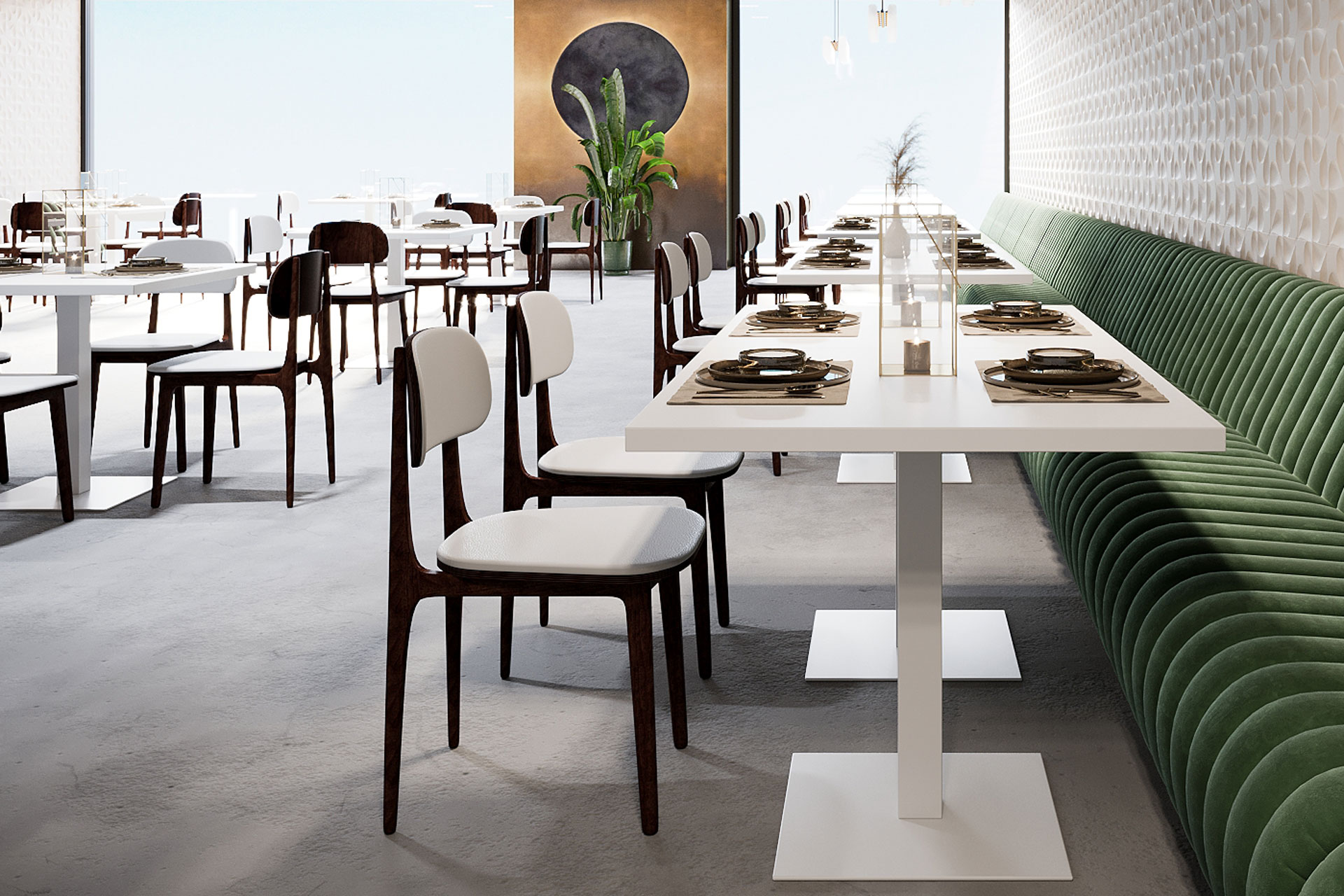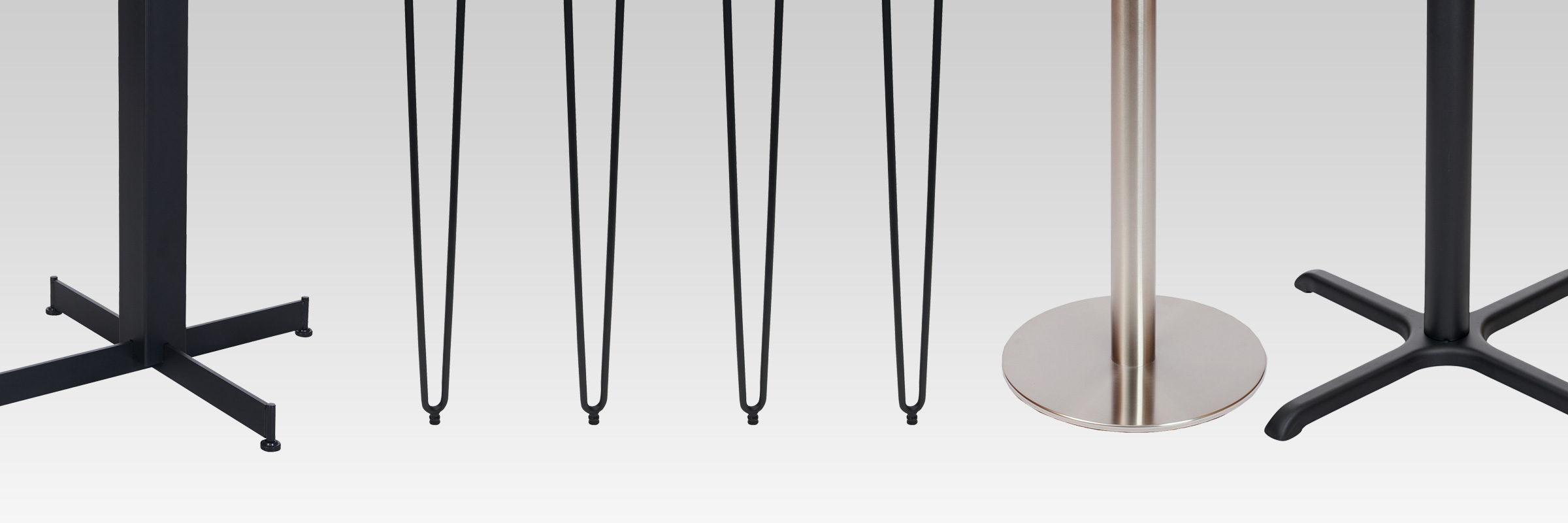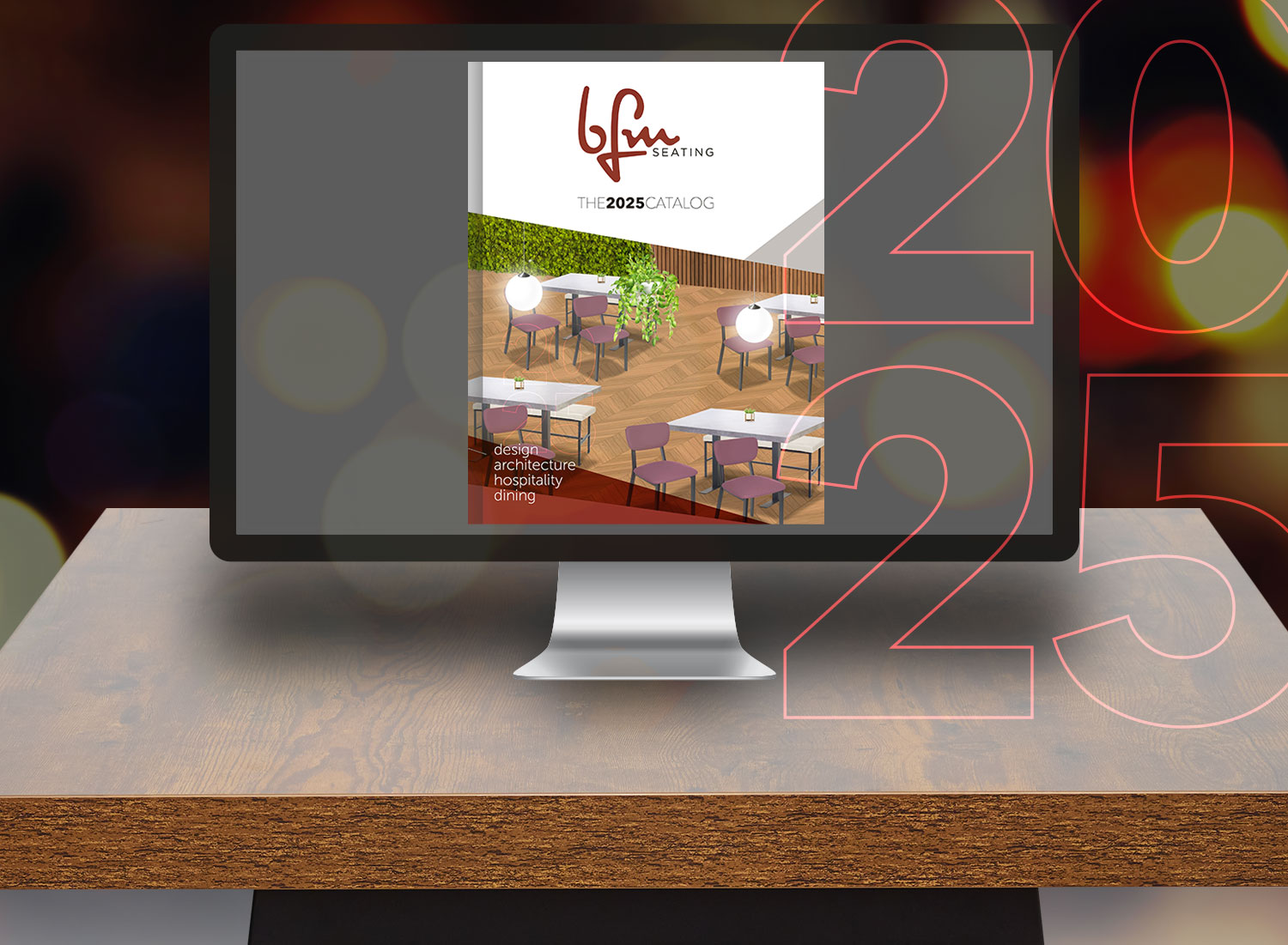
When it comes to choosing a style and size for the restaurant table bases that will support your table top, there are obvious and not so obvious points to consider.
BASE STYLES
First to consider is whether to use single column bases, 4 corner legs, or cantilever restaurant table bases. Single center column bases are far and away the most popular in food service and restaurant designs. Care needs to be shown in sizing the table base to the top being used to insure stability. A good rule of thumb if working with cross bases is to not let the table diameter be more than 12” larger than the length of the base’s cross piece. For example, a table base with a 22×22 spread is fine for 30×30 top, but not a 36×36. Rectangular bases longer than 42” should use 2 bases to insure safety and stability.

MATERIAL & WEIGHT
The material and weight of the table top will determine the size of the base’s top plate or spider. It should be noted that older buildings can have uneven floors that result in wobbly tables. This problem can sometimes be resolved by using self-adjusting glides on the base. Another option is to use disc bases, but these are much heavier than a cross base and make moving tables a bigger challenge.
ADDITIONAL CONSIDERATIONS
Ensuring the restaurant table bases you use will not be an obstacle to keeping your dining room floors clean is also very important. That’s where using wall-mounted cantilever bases can be a huge help for booth seating.
Operators will turn to 4 corner legs to meet ADA requirements. Single column bases on some sizes of square tops will not provide the needed space under the table for wheel chair clearance.
Square or round, cantilever or 4 legged, choosing the correct base for your operation comes down to more than just the style or price.
To learn more about BFM Seating’s Restaurant Table Bases, please click here or call us at 215-289-5411.

